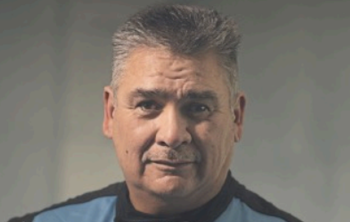Image Caption
Local Journalism Initiative Reporter
Windspeaker.com
Laura Milliken got quite a bit more than she bargained for when she took on a work project a few years ago.
Milliken, a member of Kettle & Stony Point First Nation in southwestern Ontario, created and produced Friday Night Thunder, a series that features Indigenous sprint car racers that has been shown on the Aboriginal Peoples Television Network.
Friday Night Thunder provides stories on Indigenous drivers that primarily compete at the Ohsweken Speedway, located in the Six Nations of the Grand River in Ontario.
The speedway is owned by Six Nations member Glenn Styres, who is also one of the racers featured in the series.
The fourth and final season of Friday Night Thunder will begin airing on Sept. 6. All of the seasons feature 13 half-hour episodes.
“It is sad,” Milliken said of the fact that the series is concluding. “It was a very, very special project to me.”
The series also turned her into a huge supporter of the sport.
“I had never thought of myself as a racing fan,” Milliken said.
About 60 competitors take part in races held at the Ohsweken track during the spring and summer months. Ten of those racers that are featured in the series are Indigenous.
Friday Night Thunder became more than a work project for Milliken.
“Seeing how everyone supported each other was really special,” she said. “And then, I got to watch a lot of kids grow up in the years we were shooting this. And we got to see these families working together and it was just a really, really special time. I’ve never experienced that on a production before.
“And I’m still friends with all of them. I have wonderful relationships because of this show. And I wasn’t expecting that.”
Milliken believes the sport also made for some good TV viewing.
“You’re not going to find a concentration of that many Indigenous racers anywhere – anywhere in the world,” she said. “And it was so special seeing how these families come together because it’s a very expensive and stressful sport.”
Milliken also thinks there are other reasons why members of the public tuned in to watch the series.
“I think the viewers enjoyed it because it’s not something you see very often,” she said. “A lot of people don’t know what sprint car racing is, don’t know how dangerous it is. It’s open-wheel racing. It’s very high speeds, sometimes going over 150 miles per hour on a 3/8th oval dirt track.”
That often translates into some intense action.
“It’s not uncommon to see flips on the track, people hitting the walls, people hitting each other,” Milliken said. “It’s very scary. So, these people have to have a lot of guts to do this. And it’s very expensive. It takes a lot of work to support these racing programs. It’s so unique and so challenging. It’s very inspiring. And I just think it’s a world, especially in mainstream media, grassroots dirt track racing is not something you see in the mainstream media. So, we were really pleased we were able to bring people into this world in a way that has never been done before.”
The inaugural season of Friday Nights Thunder was all shot at the Ohsweken Speedway. But once the COVID-19 pandemic hit, Six Nations shut its borders to non-members.
As a result, show officials were forced to go to other racetracks throughout Ontario to continue filming the series. Season 2 was all filmed at other tracks.
“They welcomed us with open arms but we only shot there for one season and then we went back to Ohsweken Speedway and focused our shooting there,” Milliken said.
Milliken added she was somewhat skeptical how non-Indigenous competitors would be to the series since it was concentrating on the stories of the Indigenous racers.
“We were concerned at first,” she said. “We thought how are the other drivers going to think about this with us focusing on the Indigenous drivers. But it really wasn’t an issue because it was all about the sport.”
Though non-Indigenous participants were not the focus of Friday Night Thunder, Milliken said the series did bring some exposure to the sport.
“One thing about the racing community is that if you support them, they support you,” she said. “I have never experienced anything like this in my life. We had to proof ourselves to be honest. In the beginning we had to gain trust. But once we did, there was so much support for us. There was not an issue that we were telling Indigenous stories. Everybody supported it because we were promoting sprint car racing. And that was something that everybody appreciated.”
All episodes on the first three seasons of the series are available on the APTN lumi streaming platform.

